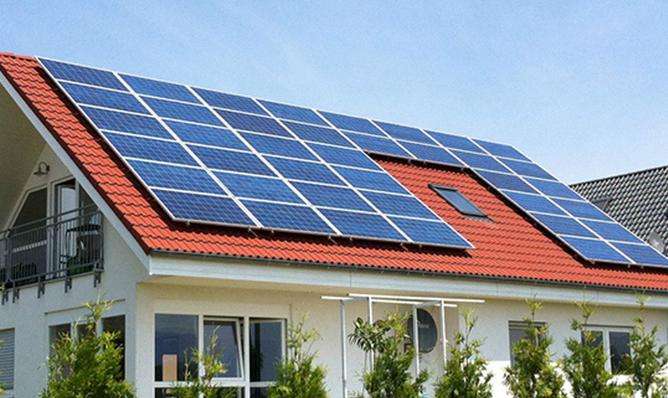There is no precise number, so let's give a rough idea,
Because the lighting is different every day.
I performed a test of the 24 V system. The operating voltage was between 26 and 27.8 V and the current was 4 to 8 A on a sunny day.
On rainy days, the voltage is 27.6-28.4 V and the current is 0.1-0.7 A.
The average ratio is d 'about one tenth of 15W/160W
The solar water heater can increase the water temperature of the water tank by several degrees in one hour on a sunny day
Do not add water to solar energy. At this time, the solar light-absorbing glass is working at its peak, and it is easy for the light-absorbing glass to break.
Advantages
(1) Universal: The sun shines on the earth, there is no geographical restriction, no matter land or sea,
No matter the mountains or the islands, we find them everywhere,can be directly developed and used, easy to collect, and does not require mining or transportation.
(2) Harmless: The development and use of solar energy will not pollute the environment. It is one of the cleanest sources of energy, which is extremely valuable today as environmental pollution becomes more and more serious.
(3) Huge: The energy of solar radiation that reaches the Earth's surface each year is approximately equivalent to 130,000 billion tons of coal, and its total amount constitutes the greatest energy that can be developed in the world today.
(4) Long term: Based on estimates of the rate of nuclear energy produced by the sun, hydrogen storage is sufficient to last tens of billions of years, and the duration life of the Earth is also about billions of years. In this sense, we can say that the energy of the sunis inexhaustible.
Disadvantages
(1) Dispersion: Although the total amount of solar radiation reaching the Earth's surface is large, the density of the energy flux is very low. On average, near the Tropic of Cancer, when the weather is relatively clear in summer, the irradiance of solar radiation is greatest at noon, and the average solar energy received over an area of 1 square meter perpendicular to the direction of light solar is about 1,000 W so the average day and night throughout the year is only about 200 W. In winter it is only about half that, and on cloudy days it does not It's usually only about 1/5. This energy flow density is very low. Therefore, when using solar energy, if we want to obtain a certain conversion power, we often need a set of collection and conversion equipment with a considerable area, which is expensive.
(2) Instability: Due to the limitations of natural conditions such as day and night, season, geographic latitude and altitude, as well as the influence of random factors such as clear, cloudy, cloudy, rain, etc., reaching a certain ground Solar irradiation is both intermittent and extremely unstable, making large-scale application of solar energy more difficult. In order to make solar energy a continuous and stable energy source and ultimately become an alternative energy source that can compete with conventional energy sources, the problem of energy storage must be well solved , that is, the energy of solar radiation during clear days should be stored as much as possible for use at night or when it rains. It is used for everyday use, but energy storage is also one of the weakest links in solar energy use.
(3) FLow efficiency and high cost: The level of development of solar energy use is theoretically feasible in some respects, but technically also mature. However, some solar energy utilization devices have low efficiency and high cost, and the current laboratory use efficiency does not exceed 30%. In general, the economy cannot compete with conventional energy. For a considerable period, the future development of the use of solar energy will be limited mainly by economic reasons.
1. After 5 hours of exposure to the sun in winter, the water temperature in the water tank can rise about 20 degrees, which means the temperature in the water tank can reach about 50 degrees.< /p>
2. Generally, the capacity of the water tank is determined based on the number of people and the amount of hot water used. It can be calculated betweene 50 and 80 liters per person. If the water tank capacity is large, there will be more vacuum tubes. If the capacity is small, there will be fewer vacuum tubes. But there are also solar water heaters arranged with double-layer vacuum tubes, the heating effect is very good in winter.
3. If the temperature in the water tank is not not sufficient, it can be heated via the auxiliary electric heater.














